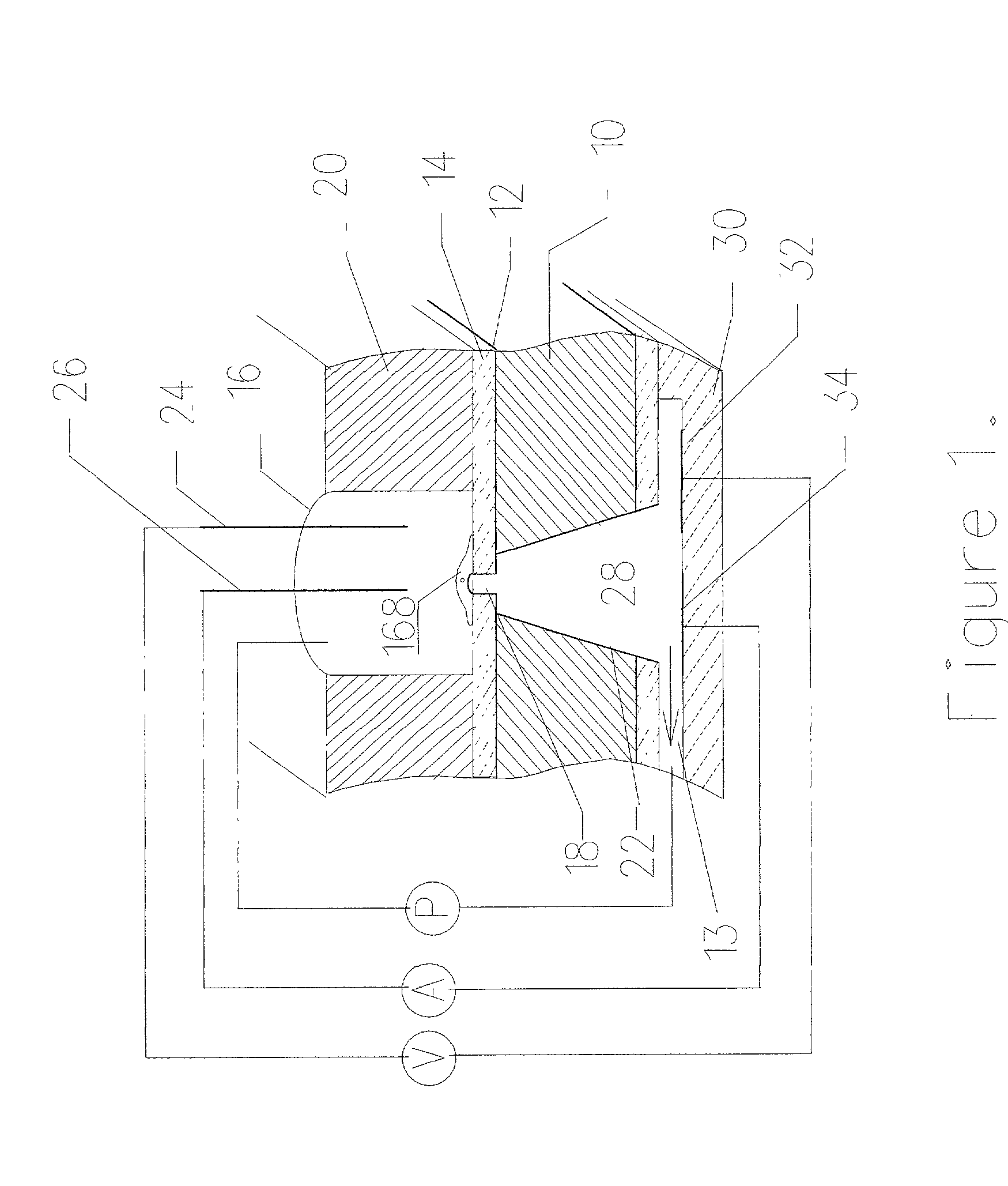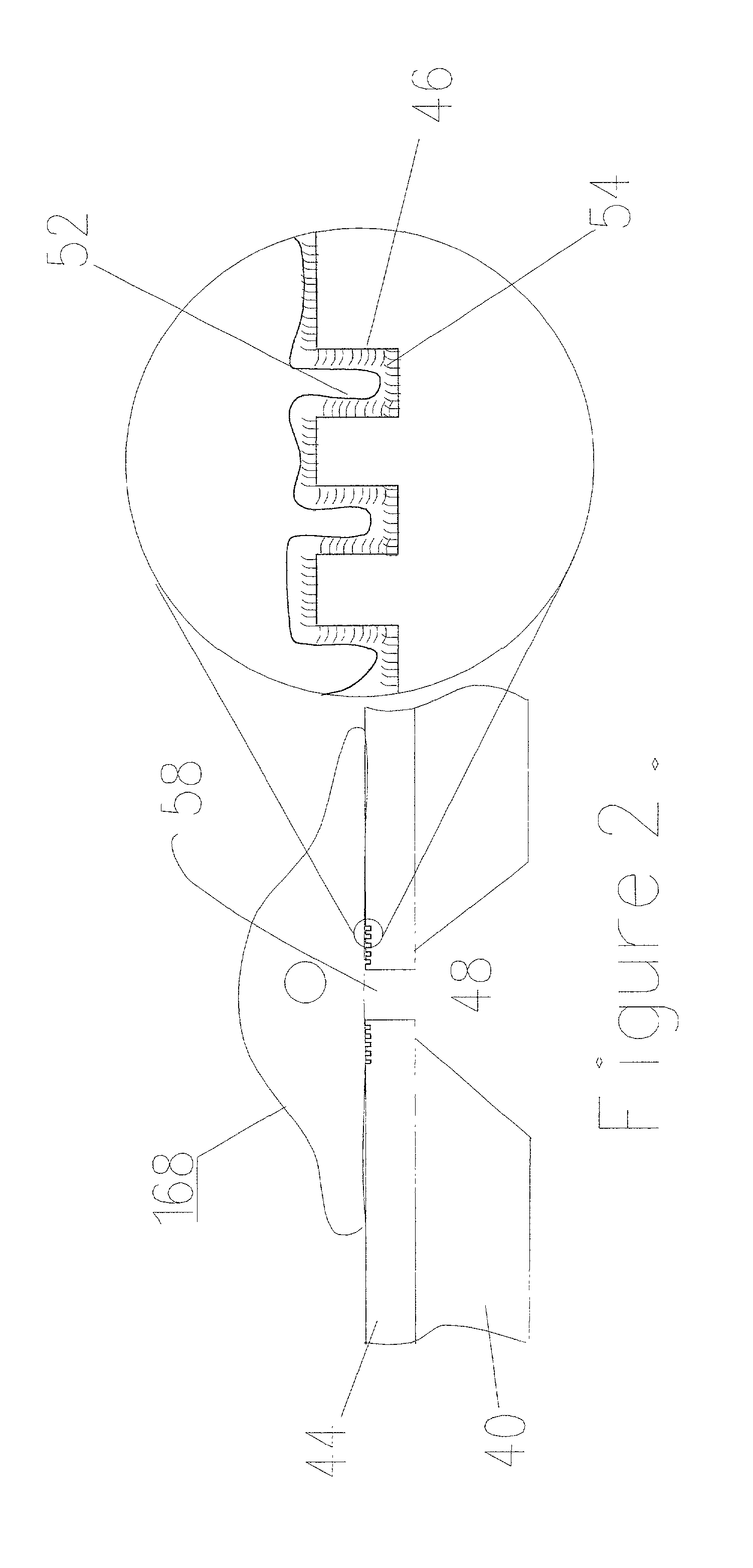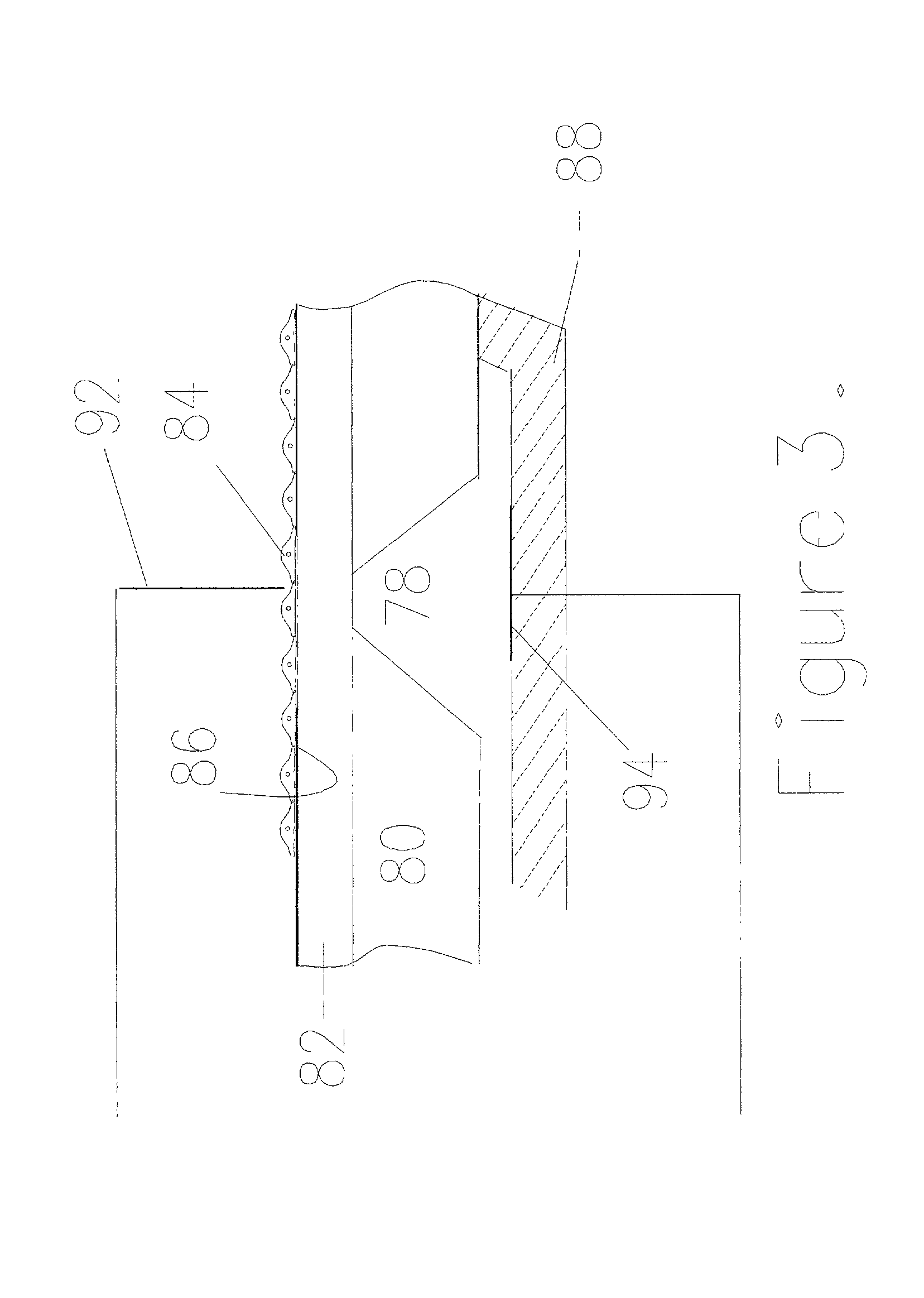Biosensors for single cell and multi cell analysis
a single cell and multi-cell technology, applied in the field of single cell and multi-cell analysis biosensors, can solve the problems of not being parallel, not being able to implement the complete method described above in their system, and not offering simultaneous cell testing
- Summary
- Abstract
- Description
- Claims
- Application Information
AI Technical Summary
Problems solved by technology
Method used
Image
Examples
Embodiment Construction
[0053] FIG. 9 shows an embodiment of the resulting device as manufactured by the above methods. A silicone substrate 20 is glued to the substrate 10 to create the well 16 on top of the membrane opening 18. Similar substrate 30 is used to create the channel network underneath the through hole opening 28. NG108-15 cells with the culture medium are dispensed into the wells 16. Both fluidic only pumping and electrokinetic pumping have been demonstrated with these cells. The cells are positioned on the substrate membrane opening in both the above pumping cases. FIG. 10 and 11 show the chip with and without the cells positioned on the substrate membrane opening. External silver / silver chloride electrodes are used to detect the impedance of the liquid with and without the cell. 213 shows the impedance without the cell and FIG. 13 shows the impedance with the cell positioned on the substrate membrane opening. The results clearly show the presence of the cell on the microhole 18 due to the c...
PUM
| Property | Measurement | Unit |
|---|---|---|
| diameter | aaaaa | aaaaa |
| width | aaaaa | aaaaa |
| width | aaaaa | aaaaa |
Abstract
Description
Claims
Application Information
 Login to View More
Login to View More - R&D
- Intellectual Property
- Life Sciences
- Materials
- Tech Scout
- Unparalleled Data Quality
- Higher Quality Content
- 60% Fewer Hallucinations
Browse by: Latest US Patents, China's latest patents, Technical Efficacy Thesaurus, Application Domain, Technology Topic, Popular Technical Reports.
© 2025 PatSnap. All rights reserved.Legal|Privacy policy|Modern Slavery Act Transparency Statement|Sitemap|About US| Contact US: help@patsnap.com



